Kamakura, a historic Japanese city, beckons visitors with its colossal Daibutsu – a 13-meter-tall, 93-ton bronze Buddha statue. Marveling at the Daibutsu’s grandeur and even venturing inside its hollow interior offers a rare, up-close perspective of the 13th-century craftsmanship. But Kamakura’s appeal extends beyond this iconic landmark, as the city’s vibrant shopping district blends traditional Japanese wares with contemporary souvenirs that capture its captivating blend of history and modernity. Whether you’re drawn to the awe-inspiring cultural heritage or the delightful shopping opportunities, Kamakura promises an unforgettable experience.
Key Points
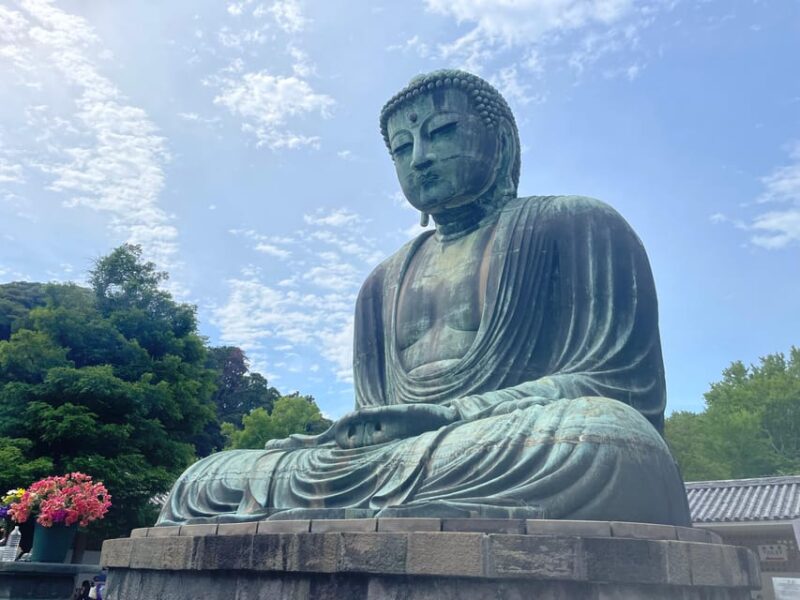
- Explore the colossal 13-meter-tall, 93-ton Daibutsu statue and marvel at its intricate 13th-century construction by entering the iconic Buddha.
- Immerse in Kamakura’s vibrant shopping district, brimming with a blend of traditional Japanese crafts and contemporary souvenirs reflecting the city’s rich cultural heritage.
- Appreciate the harmonious coexistence of history and modernity in Kamakura, where the towering Daibutsu stands amidst the bustling energy of the shopping district.
- Discover a wide range of local souvenirs, from traditional ninja weapons to charming keepsakes, that capture the essence of Kamakura’s unique character.
- Enjoy a one-of-a-kind experience by entering the Daibutsu’s hollow interior, offering a rare perspective on the ingenious engineering behind this 13th-century masterpiece.
Overview of Kamakura and the Daibutsu
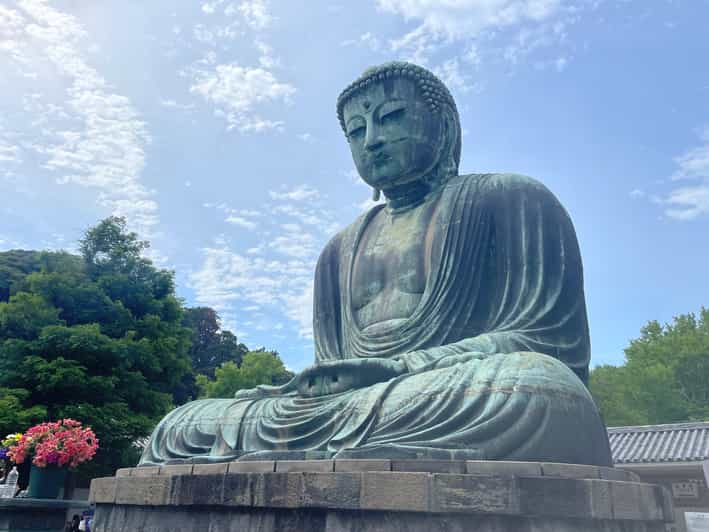
One of the most popular attractions in the historic city of Kamakura is the Daibutsu, or the Great Buddha. This colossal bronze statue, standing over 13 meters tall and weighing around 93 tons, is housed within the Kotokuin Temple.
Kotokuin is the only place in Kamakura where visitors can actually enter the Daibutsu statue, allowing them to appreciate its intricate construction from a unique perspective. The Great Buddha is one of the three largest Buddha statues in Japan, and its iconic presence has made it a must-see destination for travelers to Kamakura.
Exploring the Daibutsu is an astonishing and memorable experience for all who visit.
Ready to find more treasures? More shopping adventures we recommend in Kamakura
Exploring the Great Buddha of Kamakura
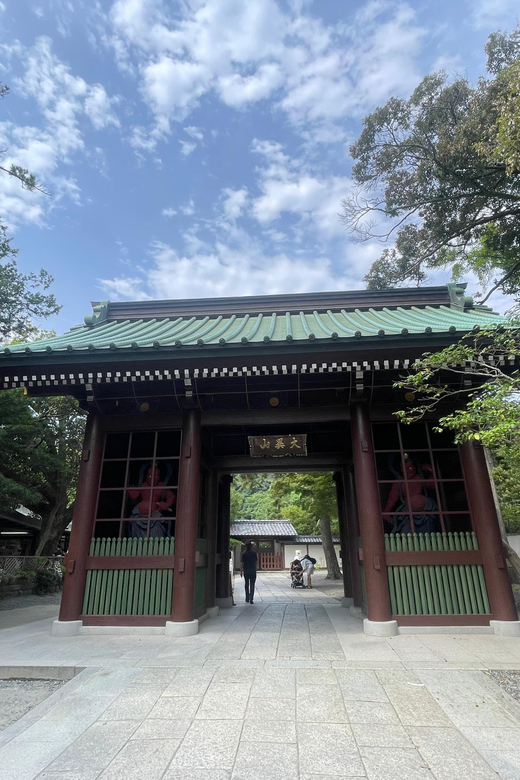
Visitors to Kotokuin Temple can marvel at the sheer magnificence of the Great Buddha, whose towering bronze form dominates the serene temple grounds. Measuring over 13 meters in height and weighing around 93 tons, the Daibutsu is one of the three largest Buddha statues in Japan.
Constructed in the 13th century, the iconic statue is a testament to the skilled craftsmanship of its creators. Uniquely, Kotokuin Temple is the only place in Kamakura where visitors can enter the Great Buddha, offering a rare opportunity to appreciate the statue’s intricate inner workings from a truly remarkable vantage point.
Entering the Daibutsu Statue

The Kotokuin Temple allows visitors a rare opportunity to enter the majestic Daibutsu, or Great Buddha, and experience its grandeur from within. Stepping inside the iconic bronze statue, guests can marvel at the intricate workmanship and appreciate the sheer scale of the 13-meter-tall, 93-ton structure up close.
This unique access is exclusive to the Kotokuin Temple, providing a perspective unattainable elsewhere in Kamakura. Visitors can explore the Buddha’s hollow interior, revealing the ingenuity of its 13th-century construction. This intimate encounter with one of Japan’s most renowned cultural treasures offers a truly unforgettable experience, complementing the awe-inspiring exterior view of the Daibutsu.
History and Construction of the Daibutsu
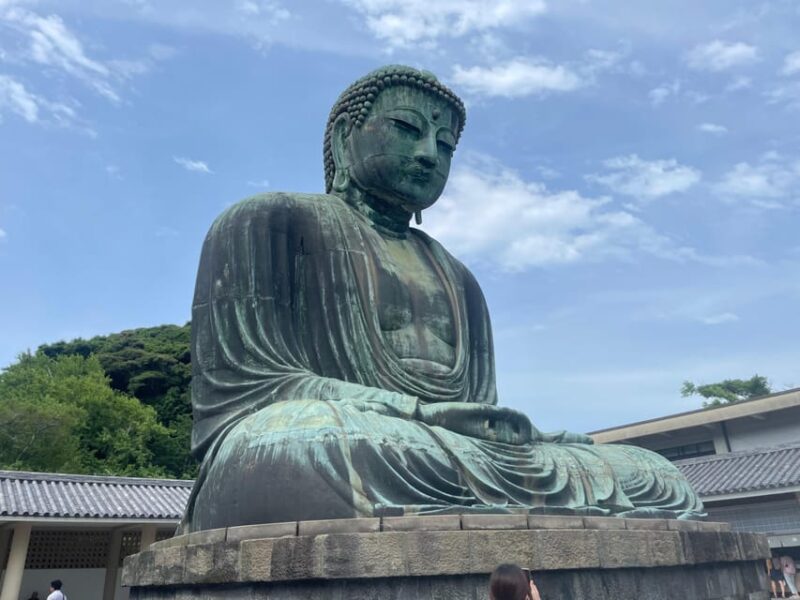
The Daibutsu of Kamakura boasts a rich history dating back to the 13th century. This iconic bronze statue stands over 13 meters tall and weighs around 93 tons, making it one of the three largest Buddha statues in Japan.
The Daibutsu was first commissioned in 1252 and took several years to complete. Its intricate construction, featuring a hollow interior, allowed it to withstand the elements over the centuries. The Daibutsu remains a testament to the skilled craftsmanship of its creators and a must-see attraction for visitors to Kamakura.
More Great Thing To Do NearbyUnique Perspective From Inside the Daibutsu

Kotokuin Temple offers visitors a rare opportunity to explore the interior of the legendary Daibutsu, providing a captivating vantage point to appreciate the statue’s intricate craftsmanship. Stepping inside the colossal bronze figure, guests can marvel at the careful attention to detail that went into its construction.
The hollow interior allows for a unique perspective, enabling visitors to fully comprehend the sheer scale and engineering prowess behind this 13th-century masterpiece. This exclusive access sets Kamakura’s Daibutsu apart from other significant Buddha statues in Japan, offering a one-of-a-kind experience for those who make the journey to this historic site.
- Kamakura: Great Buddha, Hase Temple, & Komachi Street Tour
- Full Day Kamakura Private Tour With English Speaking Driver
- Kamakura: Full Day Private Tour With English Guide
- From Tokyo: Kamakura Private Customize Tour by Luxury Van
- Kamakura: Private History and Heritage Tour by Rickshaw
- Kamakura Through Time (Hiking, Writing Sutras…)
Souvenirs and Shopping in Kamakura
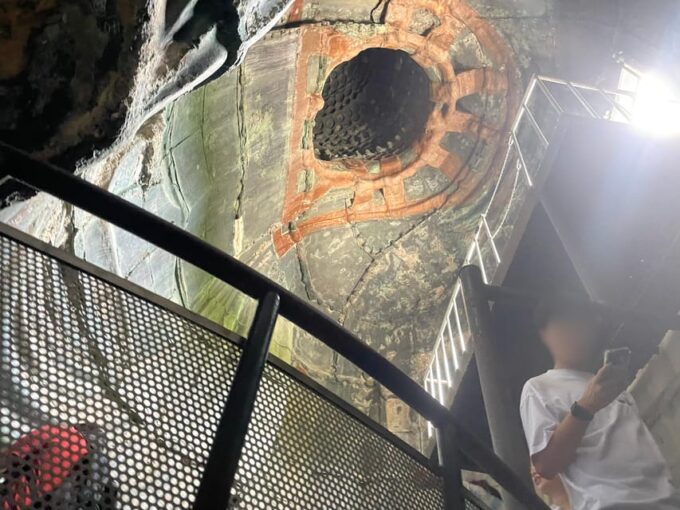
Along With the captivating experience of exploring the interior of the legendary Daibutsu, visitors to Kamakura can enjoy a vibrant shopping district teeming with a diverse array of local souvenirs.
From traditional ninja weapons like shuriken and samurai swords to more whimsical keepsakes such as magnets and playing cards, the shops capture the blend of history and modernity that defines Kamakura. Visitors can browse a wide selection of souvenirs, each offering a unique glimpse into the city’s rich cultural heritage.
Whether seeking a tangible memento or simply indulging in the local shopping experience, Kamakura’s shopping district provides a delightful complement to the awe-inspiring Daibutsu.
Blend of History and Modernity
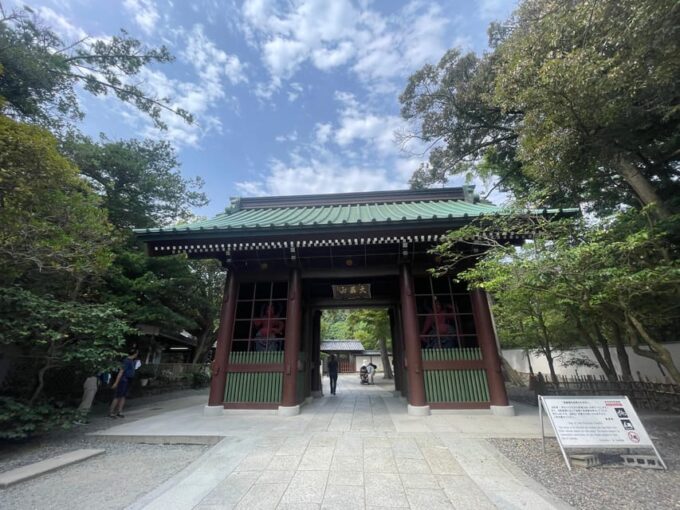
Kamakura’s vibrant shopping district exemplifies the city’s captivating blend of history and modernity. Traditional Japanese crafts and weaponry stand alongside contemporary souvenirs, creating a unique shopping experience. Visitors can browse through intricate shuriken and samurai swords, evocative of Kamakura’s storied past, while also discovering modern keepsakes like magnets and playing cards.
This fusion of the ancient and the modern reflects the essence of Kamakura, where the grand Daibutsu statue stands as a timeless icon amid the bustling energy of the city. The opportunity to explore this harmonious coexistence of history and modernity is a highlight of any visit to Kamakura.
Highlights of the Kamakura Experience

Visiting the Daibutsu, the colossal bronze Buddha statue, stands as a truly awe-inspiring highlight of the Kamakura experience. The sheer size of the Daibutsu, standing over 13 meters tall and weighing 93 tons, is simply breathtaking.
Equally remarkable is the unique opportunity to enter the interior of the Great Buddha, allowing visitors to appreciate the intricate craftsmanship from a rare perspective. Plus, the wide array of local souvenirs, ranging from traditional ninja weapons to charming keepsakes, provides the perfect chance to capture the essence of Kamakura’s blend of history and modernity.
The Daibutsu and its surrounding shopping experience truly encapsulate the highlights of this captivating Japanese destination.
Frequently Asked Questions

What Are the Peak Visiting Hours for the Daibutsu?
The peak visiting hours for the Daibutsu are typically in the late morning and early afternoon when crowds are smallest. Visitors should plan to arrive early to avoid peak crowds and long lines.
Is There a Dress Code Required to Enter the Daibutsu?
There’s no strict dress code to enter the Daibutsu. Visitors can wear casual attire, though it’s best to avoid beachwear or anything too revealing. The focus is on respectfully appreciating the iconic statue.
Can Visitors Take Photographs Inside the Daibutsu?
Yes, visitors can take photographs inside the Daibutsu. It’s allowed, providing they don’t use flash photography, which can damage the statue’s surface. Capturing the Buddha’s impressive interior is a highlight of the unique experience.
Is the Entrance Fee to the Daibutsu Included in the Kamakura Pass?
The entrance fee to the Daibutsu in Kamakura is not included in the Kamakura pass. Visitors must purchase a separate ticket to enter the Great Buddha statue.
Where Can I Find the Best Local Snacks and Street Food in Kamakura?
The best local snacks and street food in Kamakura can be found around the main shopping streets near Kotokuin Temple. Grab some mochi, traditional sweets, or savory treats from the numerous vendors to enjoy while exploring the historic town.
Recap
Kamakura’s Daibutsu and vibrant shopping district offer visitors an unforgettable cultural experience. From marveling at the colossal Buddha statue to exploring the blend of traditional and modern wares, a trip to this historic city promises awe-inspiring heritage and delightful discovery. Whether it’s the Daibutsu’s intricate craftsmanship or the captivating shopping opportunities, Kamakura’s allure leaves a lasting impression.
You can check if your dates are available here:More Tour Reviews in Kamakura
- Kamakura: Largest Wooden Buddha, Temples, Cultural Experience
- Kamakura, Craft Your Music Box & Discover Japans Biggest Buddha
- Kamakura Calligraphy Experience
- Tour in Kamakura Great Buddha Shogun Shrine With Photographer
- ZASHIKIMAI Performance by National Theatre in Kenchoji, Kamakura
- 【Kamakura Highlights 5 Hour】Budget Group Walking Tour With Lunch
Not for you? Here's more things to do in Kamakura we have recnetly reviewed
- 6 Best Full-Day Tours In Kamakura
- 2 Best Food Tours In Kamakura
- Tokyo: Kamakura Private Tour English Speaking Driver
- Guided Kamakura Private Tour GREEN NUMBER PLATES
- Kamakura: Best Guided Day Tour With Tea Ceremony
- Kamakura Private Custom Tour With Local Guide
- Kamakura Private Half-Day Vegetarian & Muslim-Friendly Tour
- 3h Private Tour With a Local Photographer
- Kamakura Small Group Onigiri Making and Sake Tasting in Sake Bar
- 【Explore Kamakura – Private 3 Hour】 Guided Walking Tour Special
- Kamakura Magokoro Ramen Cooking Class
- Hayama Imperial Villa and Tateishi Ukiyo-e Private Half Day Tour
